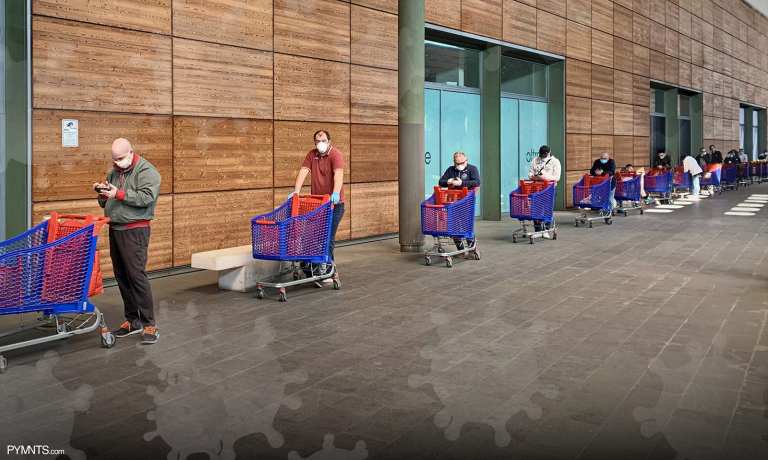
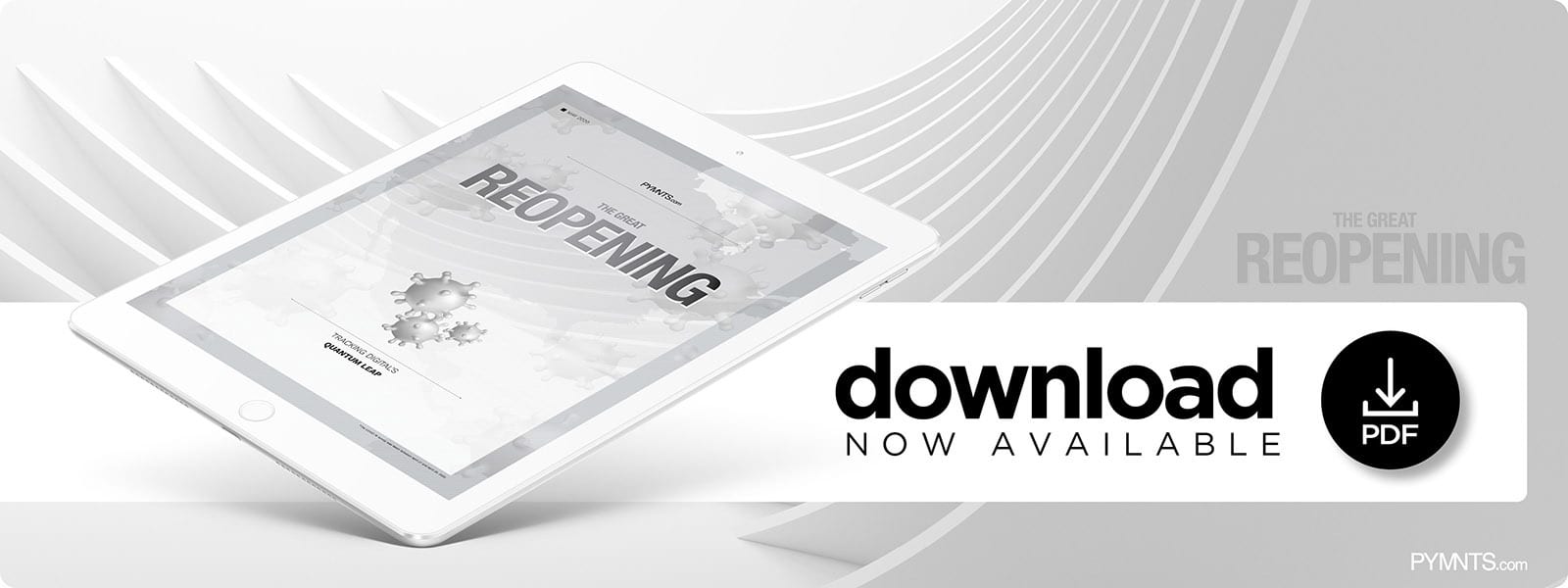 The COVID-19 pandemic has upended millions of consumers’ lives, be it through health complications, job loss, stay-at-home orders or a more general anxiety about what the future holds as consumers across the United States share in the experience of being stuck at home.
The COVID-19 pandemic has upended millions of consumers’ lives, be it through health complications, job loss, stay-at-home orders or a more general anxiety about what the future holds as consumers across the United States share in the experience of being stuck at home.
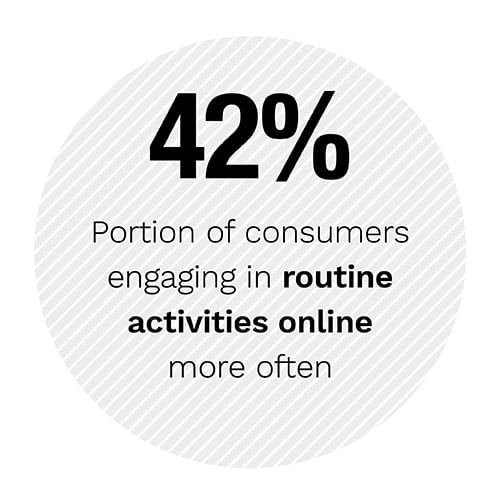 Not all areas of life have shut down amid the pandemic, however. Many consumers are still doing many of the same activities they engaged in before the pandemic just as often now — except they are doing them online. Forty-two percent of consumers say they are performing such routine activities more often than they did before the pandemic began, in fact.
Not all areas of life have shut down amid the pandemic, however. Many consumers are still doing many of the same activities they engaged in before the pandemic just as often now — except they are doing them online. Forty-two percent of consumers say they are performing such routine activities more often than they did before the pandemic began, in fact.
There are also signs that consumers have grown accustomed to their newfound digital lifestyle, to the point that many plan to maintain it even after local economies reopen. Three out of every 10 consumers are not only going online to shop, to work and for leisure more frequently since the pandemic began but are also planning to continue doing so at least somewhat as often as they do now.
We, therefore, appear to be witnessing the beginning of what could result in a long term or even permanent market restructuring that could redirect $158 billion in brick-and-mortar sales online.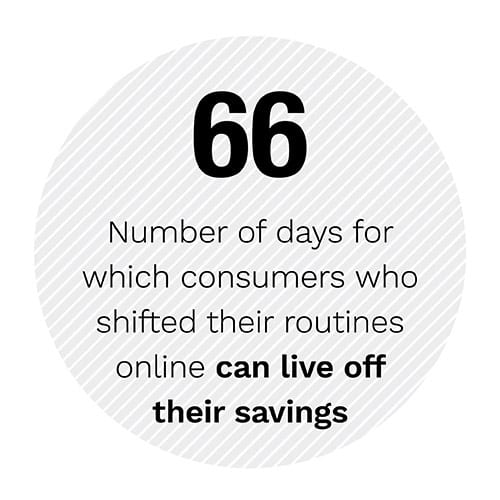
This is just one of the key findings revealed in The Great Reopening: Tracking Digital’s Quantum Leap edition, PYMNTS surveyed 2,047 U.S. consumers about how the pandemic has impacted their routines, their internet usage and the extent to which they plan to maintain their behavior after stay-at-home mandates are lifted.
The biggest shift in consumers’ usage of the internet to perform routine activities has been with regard to how they shop for retail goods. Our research shows that 32.8 percent of consumers are shopping for retail items just as often as they did before the pandemic, only now they are doing so online. This compares to 12.8 percent and 16.1 percent who have made similar changes to their grocery shopping and restaurant ordering routines, respectively.
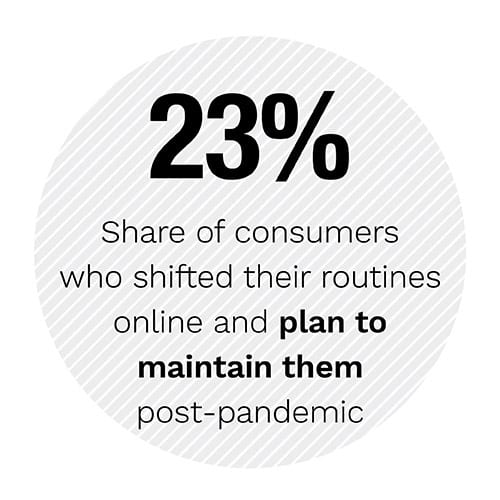 Our research also showed that consumers’ changing routines appear to vary depending on a wide variety of factors, including age groups, income brackets, how much they have in their savings and their reasons for feeling concerned about the pandemic, in the first place.
Our research also showed that consumers’ changing routines appear to vary depending on a wide variety of factors, including age groups, income brackets, how much they have in their savings and their reasons for feeling concerned about the pandemic, in the first place.
Consumers earning more than $100,000 per year are the most likely not only to have gone online to continue their routine activities, for example, but also plan to keep doing so after reopening. This is the case for 38.1 percent of consumers in this income bracket, compared to 34.2 percent of those earning between $50,000 and $100,000 per year and just 27.7 percent of those earning less than $50,000 per year.
So how else will consumers’ plans change for browsing, shopping and paying for food and retail items post-pandemic, according to their unique situations? The Great Reopening: Tracking Digital’s Quantum Leap edition aims to find out.
To learn more about how consumers plan to extend their lockdown routines into the post-pandemic world and what it could mean for the future of retail, download the report.